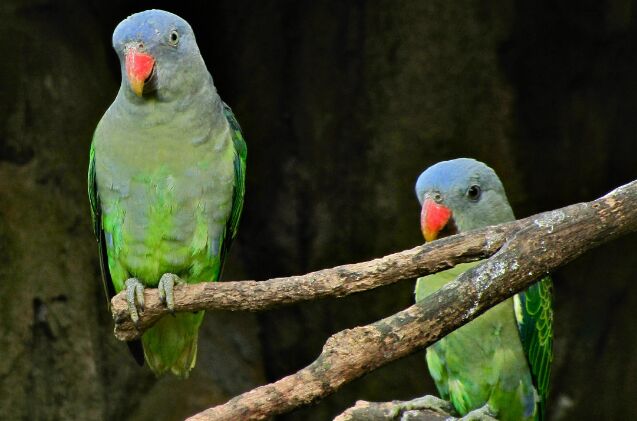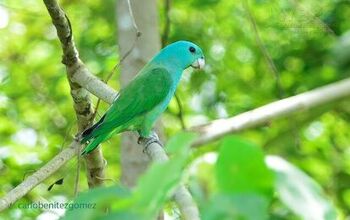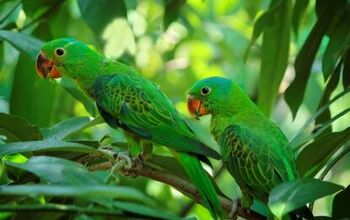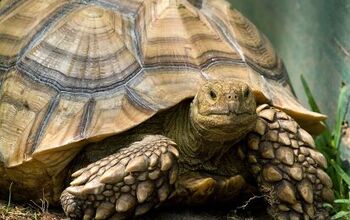Blue Rumped Parrot


About Blue Rumped Parrot
A unique parrot, and the only member of its family, the Blue Rumped Parrot definitely deserves to be called one of a kind- in more ways that one. Besides their beautiful looks, they are also considered to be docile, quiet and peaceful birds. Naturally, this makes them attractive to plenty of prospective owners, mostly because they are great for apartment settings. In addition, the fact that they’re sweet and not too demanding makes the Blue Rumped Parrot a good choice for singles and seniors, too.
As a pet, the Blue Rumped Parrot is generally considered to be a calm, docile bird with a peaceful nature.
Native Region/Natural Habitat
These parrots are natives to a large region in South Asia and are mostly found in parts of Myanmar, Malaysia, Thailand, Borneo, and Sumatra. They are considered a near threatened breed and have suffered due to the extensive destruction of forest in the Sundaic lowlands. Most of the old, primary forest in this area was largely gone by 2010. Today, these parrots are found in lowland woodlands, secondary growth, shrubland, mangroves, and swamp. Some are even seen in plantations and agricultural areas. Another big aspect for their decline was the illegal trapping for the local pet market. They are known to be easy to capture by poachers, mostly because they freeze once frightened, making them an easy catch.
Due to the fact that the Blue Rumped Parrot is the only member of its family, this breed doesn’t share many similarities with any other species. Some of their distinct traits are the robust, stocky build, a large head, and a very powerful beak. In appearance, they mostly resemble the Senegal Parrot, even though they are not related. The adults reach an average length of just 18 centimeters (7 inches) and will weigh about 3 ounces (85 grams). Although small, they are stocky and chubby, which gives them an appearance of strength. Males and females show some clear differences and they’re easy to tell apart.
Most owners praise these parrots for their quiet and docile personality. They really don’t show off too much and will be silent throughout most of the day. Dawn and dusk are the usual times when they will tune in with their natural calls, which are a mix of high pitched screams and shrill melodic tweets. Some birds, although rarely, will learn to repeat just a few basic words. This occurs mostly when the bird is raised from a young age. Either way, Blue Rumped Parrot is suited to be an apartment pet, since they are quiet more often than not.
Even though petite, the Blue Rumped Parrot boasts a colorful plumage. The males have a light blue head, purplish blue back, and a grey-green lower body. The wings are deep green, with the feathers bordered with a lighter shade, giving them a patterned and detailed appearance. Their large red beak gives a perfect contrast to cool-toned feathers. The females are generally similar, with the biggest difference being in the head color. Unlike males, the females have a brown head and mostly green body. In both sexes, though, the beauty and charm of Blue Rumped Parrot are very apparent.
The Blue Rumped Parrot is a hardy bird that easily adapts to most living conditions.
In the wild, these parrots will thrive on a varied diet of seeds, crops, insects, and fruits. For your pet Blue Rumped Parrot, you should start with a commercial seed or pellet-based mix. Keep in mind that these robust and chunky parrots can be prone to obesity, so try to minimize any foods that have high fats in them. You should also include plenty of fresh fruits and vegetables in their diet. Spinach, lettuce, kale and similar leafy veggies are the favorites of Blue Rumps and will serve as a great source of the much needed Vitamin A.
The Blue Rumped Parrot is a hardy bird that easily adapts to most living conditions. Especially when the conditions are optimal! With a well-balanced diet, plenty of exercise and a lot of social interaction you will set a foundation for your pet’s long, healthy life. If properly cared for, these birds can live from 15 to 35 years.
Blue Rumps love to sing on rainy days! What a way to lift up your mood.
As a pet, the Blue Rumped Parrot is generally considered to be a calm, docile bird with a peaceful nature. Their quiet personality might be more suited for like-minded owners. Still, they are often kept as aviary birds, as it is a fact that in pairs and with more room to fly about, they become more sociable. Some Blue Rumps can even develop a more melodic singing, or learn to repeat a few words. Although rare on the global pet market, the Blue Rumped Parrot is certainly worth the search.
Photo credit: Bernard DUPONT/Wikimedia Commons; TJ Lin/Wikimedia Commons; Yang Chee Kwong/Shutterstock

A proud mama to seven dogs and ten cats, Angela spends her days writing for her fellow pet parents and pampering her furballs, all of whom are rescues. When she's not gushing over her adorable cats or playing with her dogs, she can be found curled up with a good fantasy book.
More by Angela Vuckovic

























